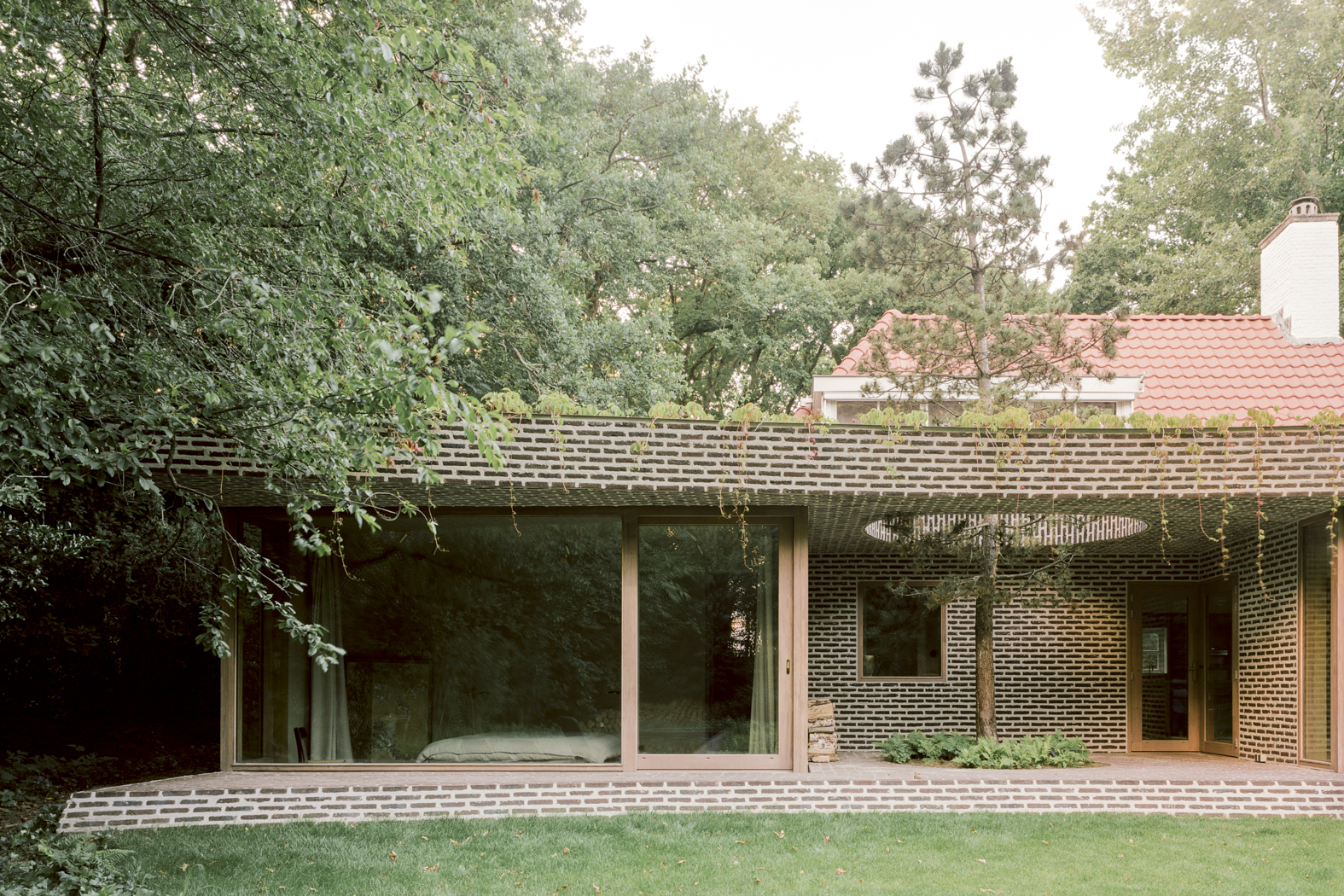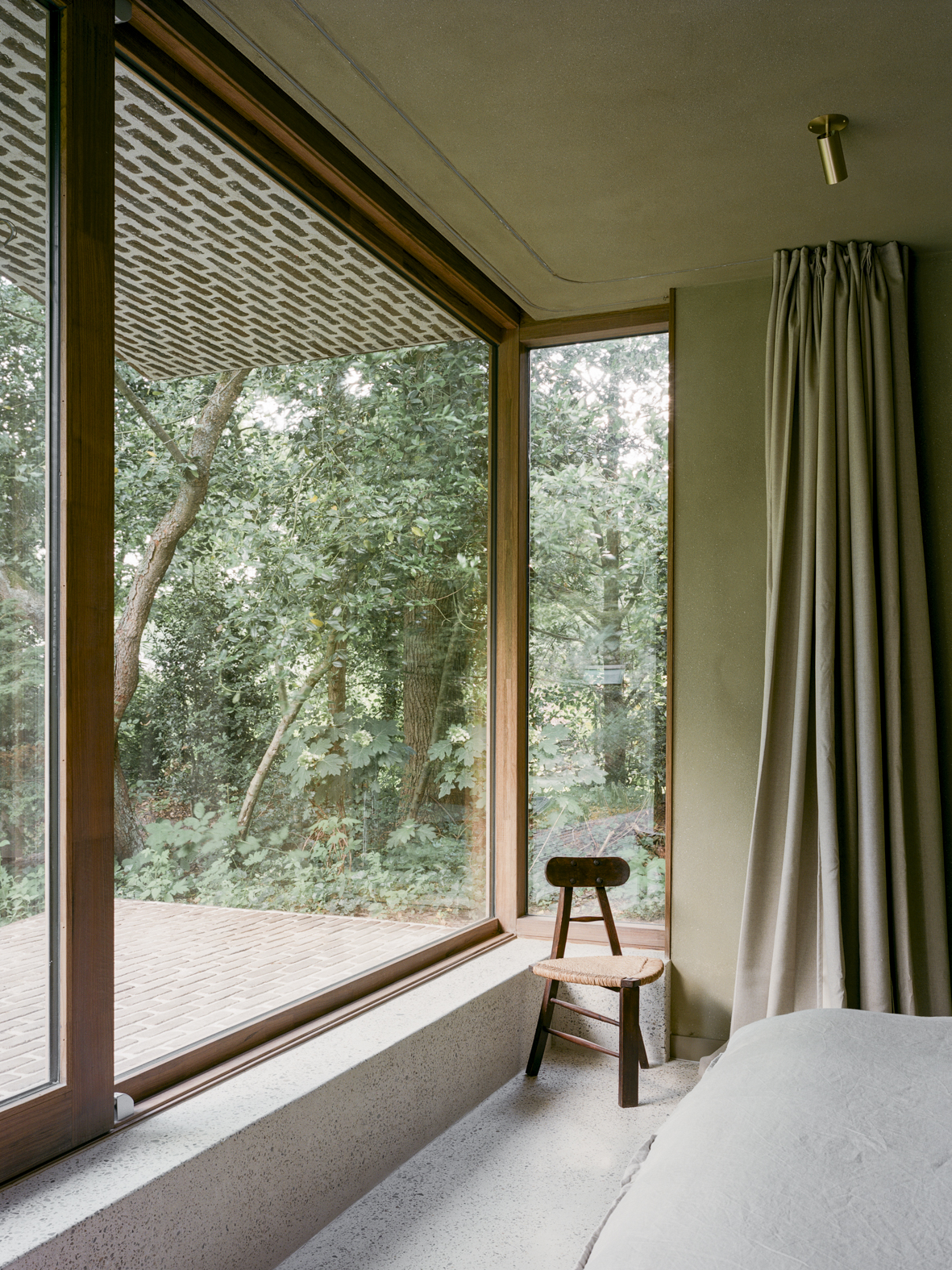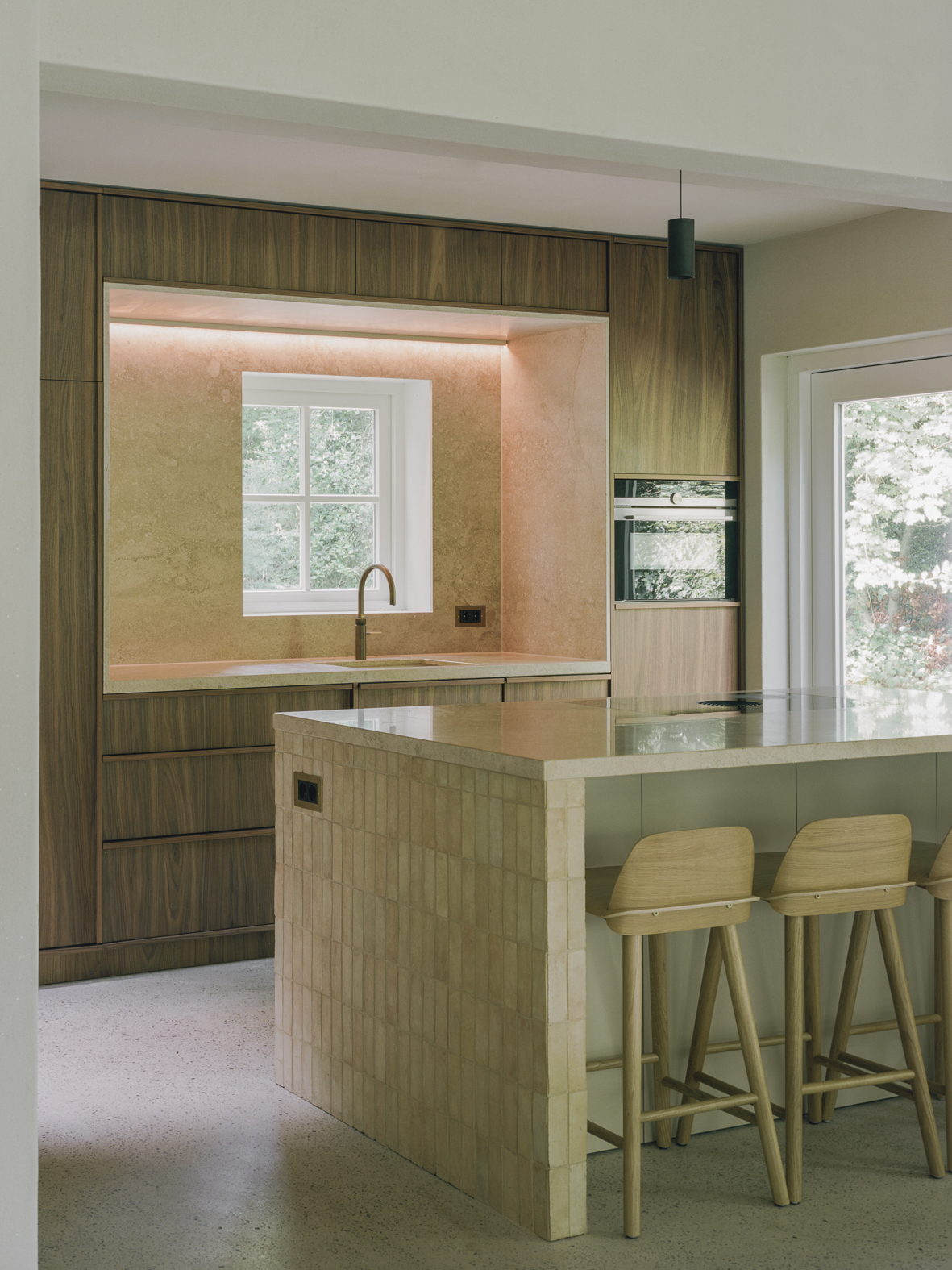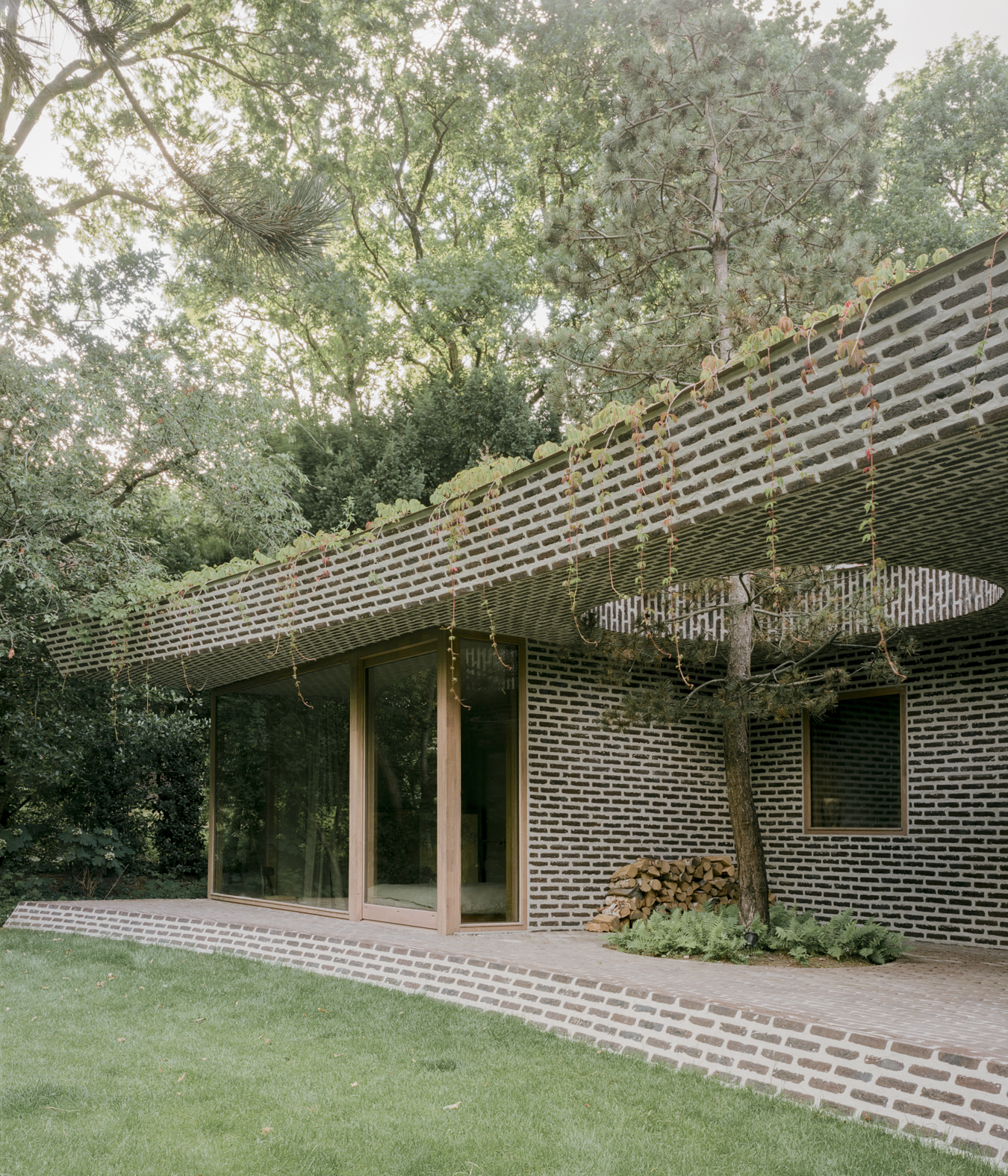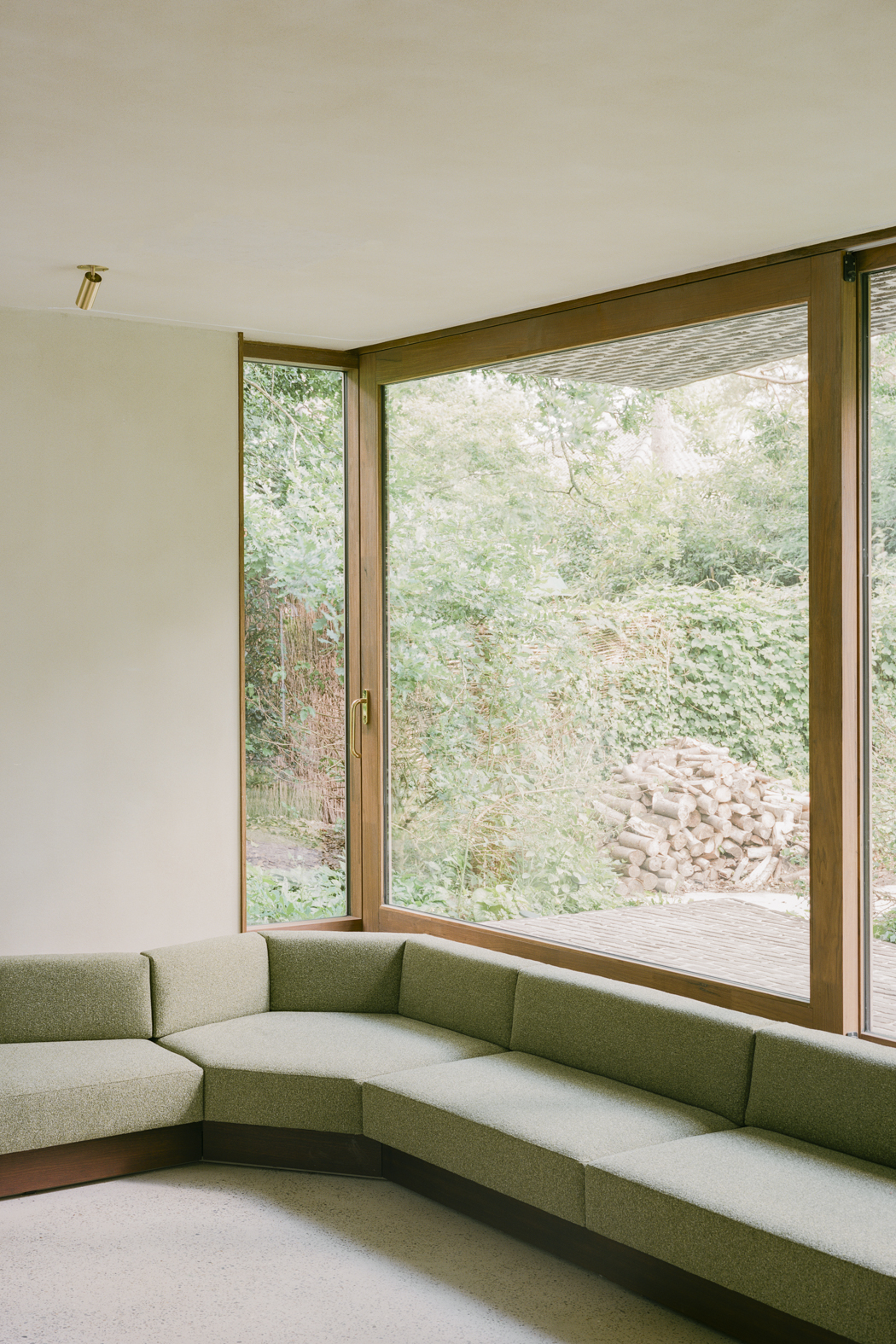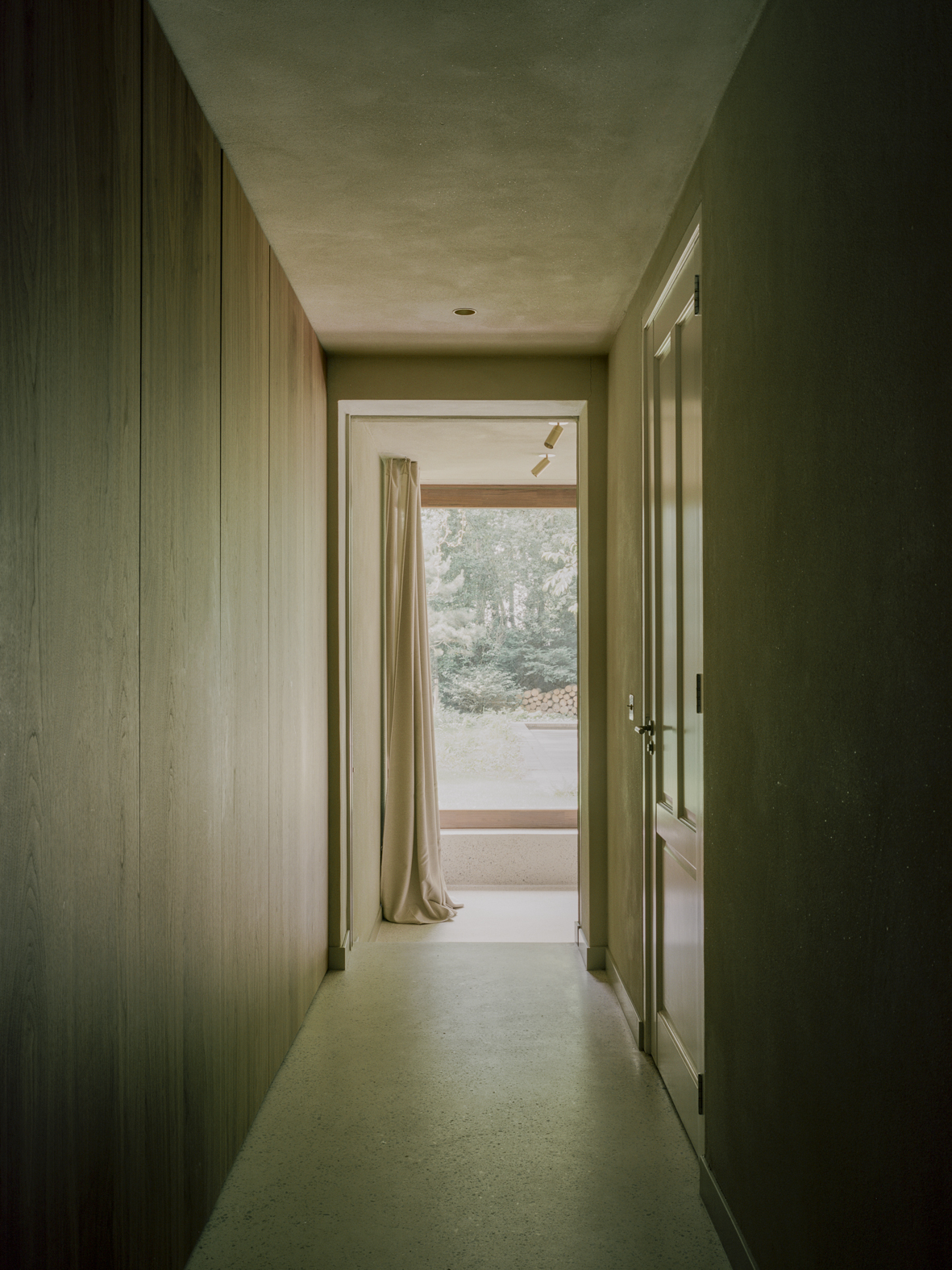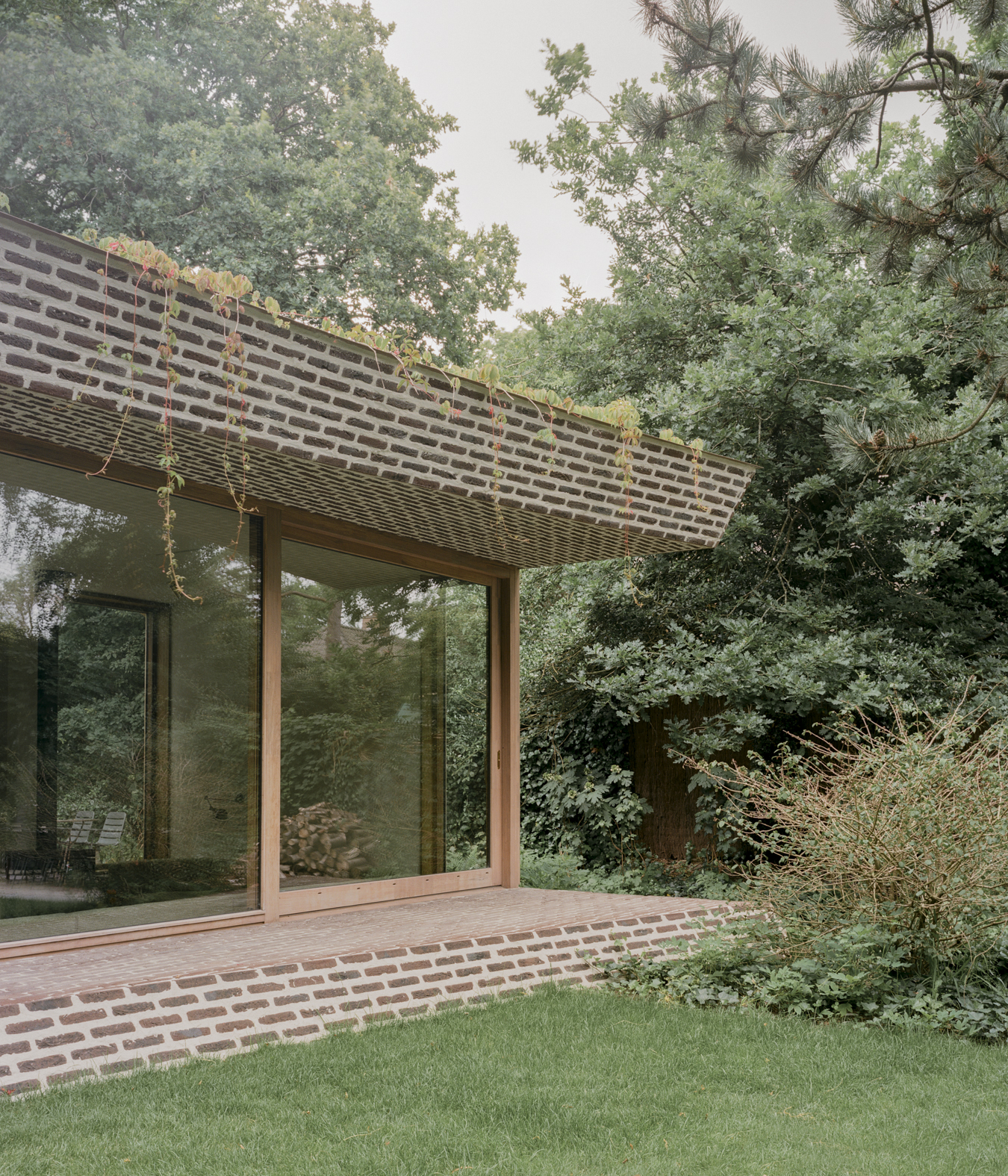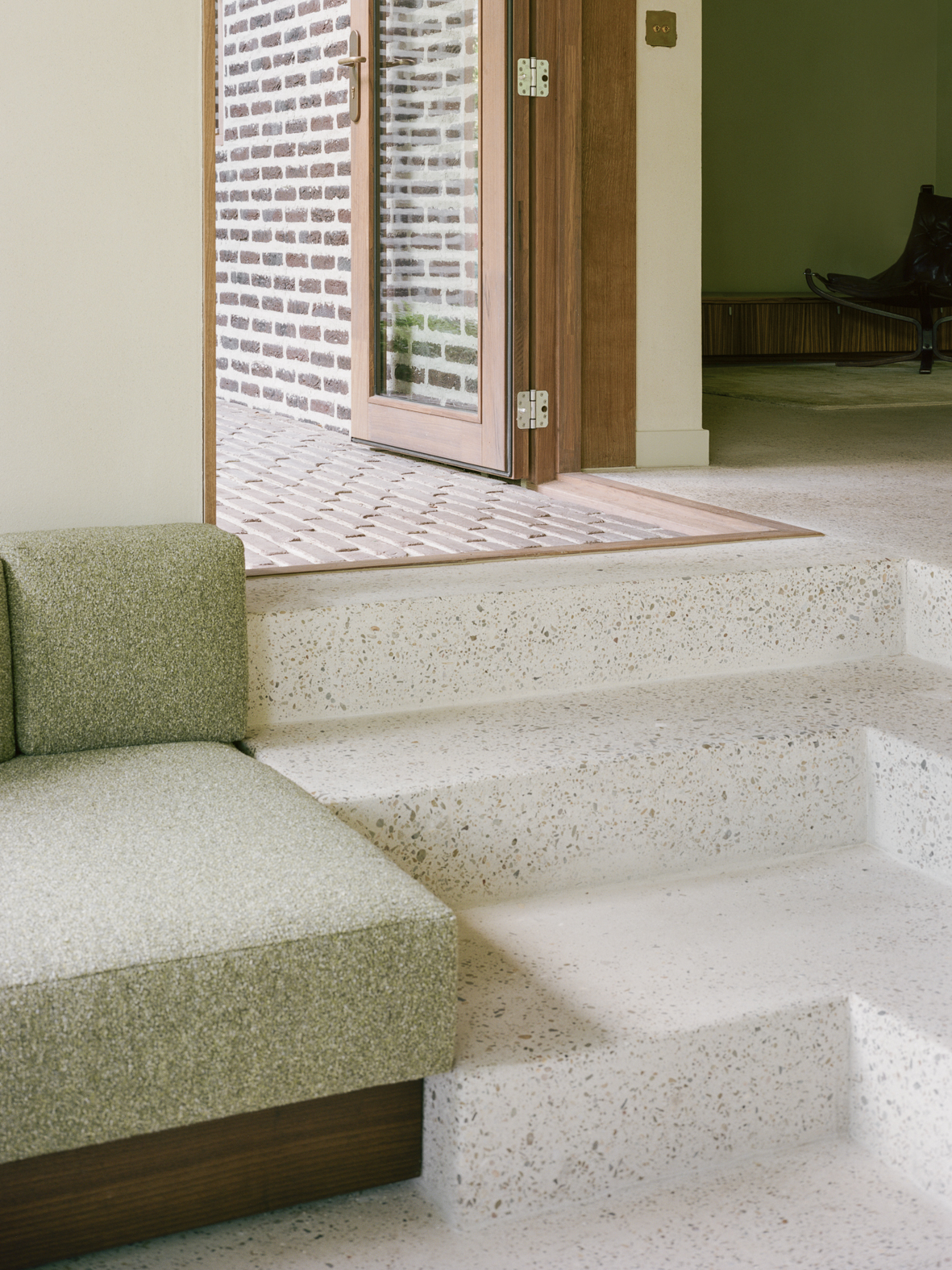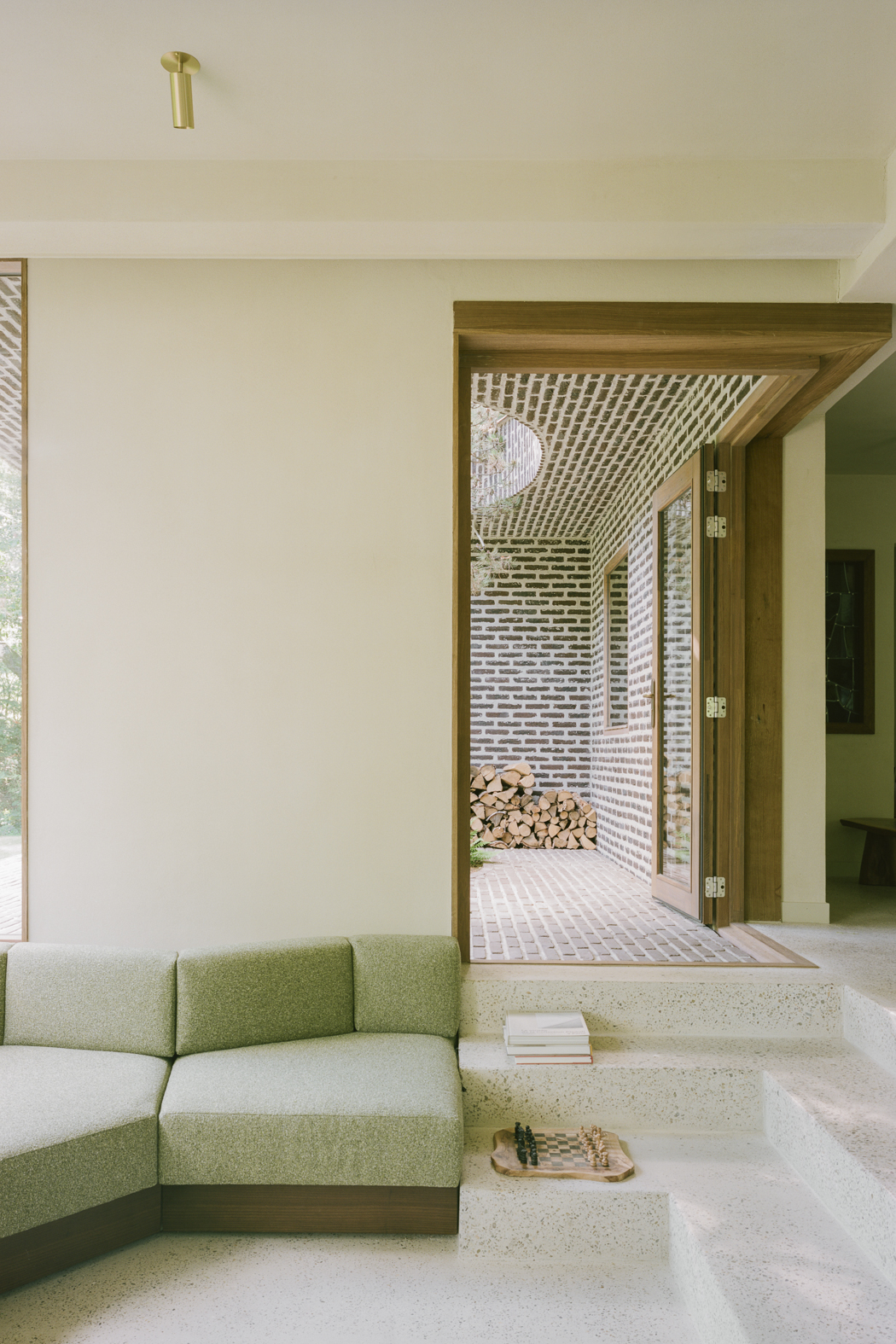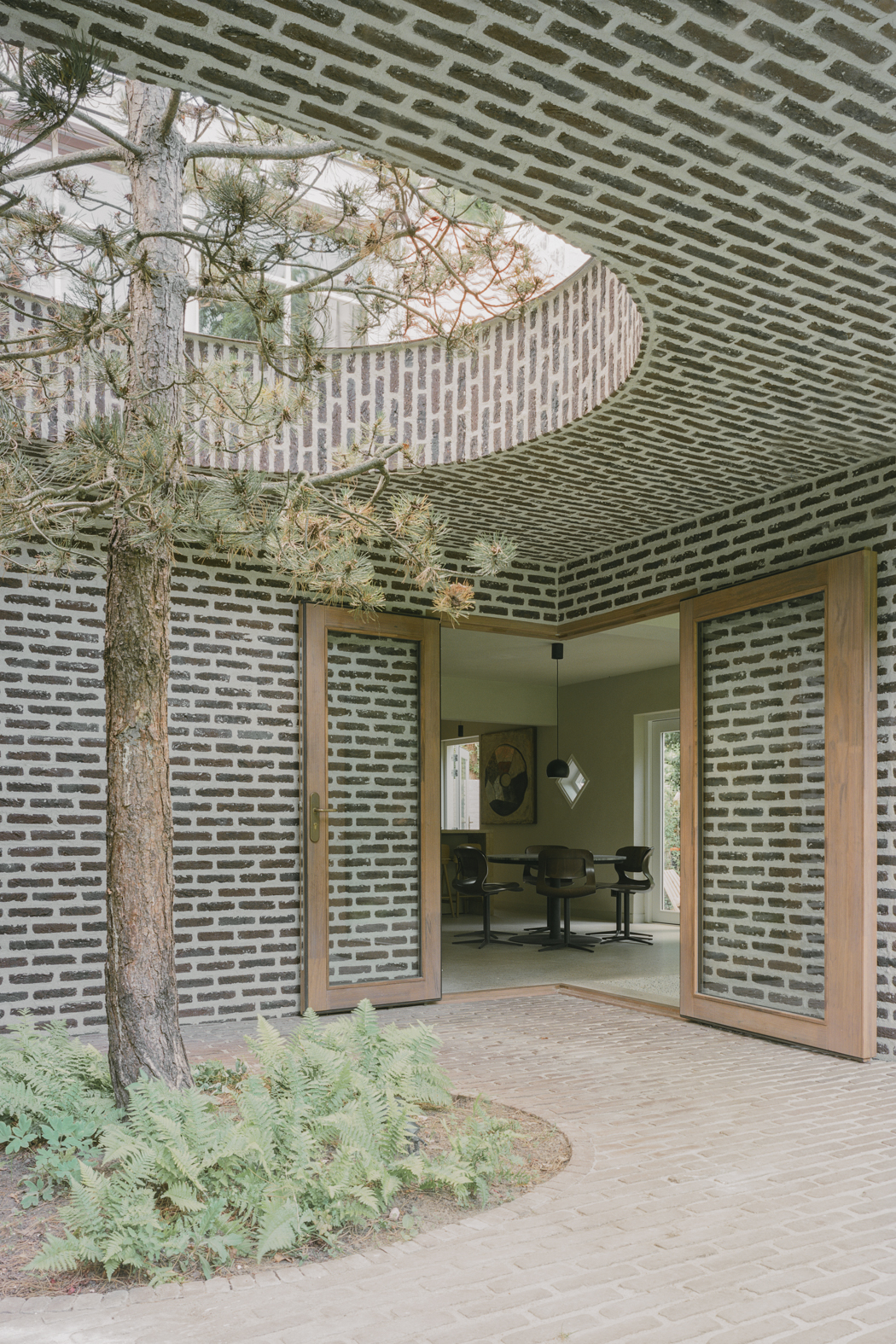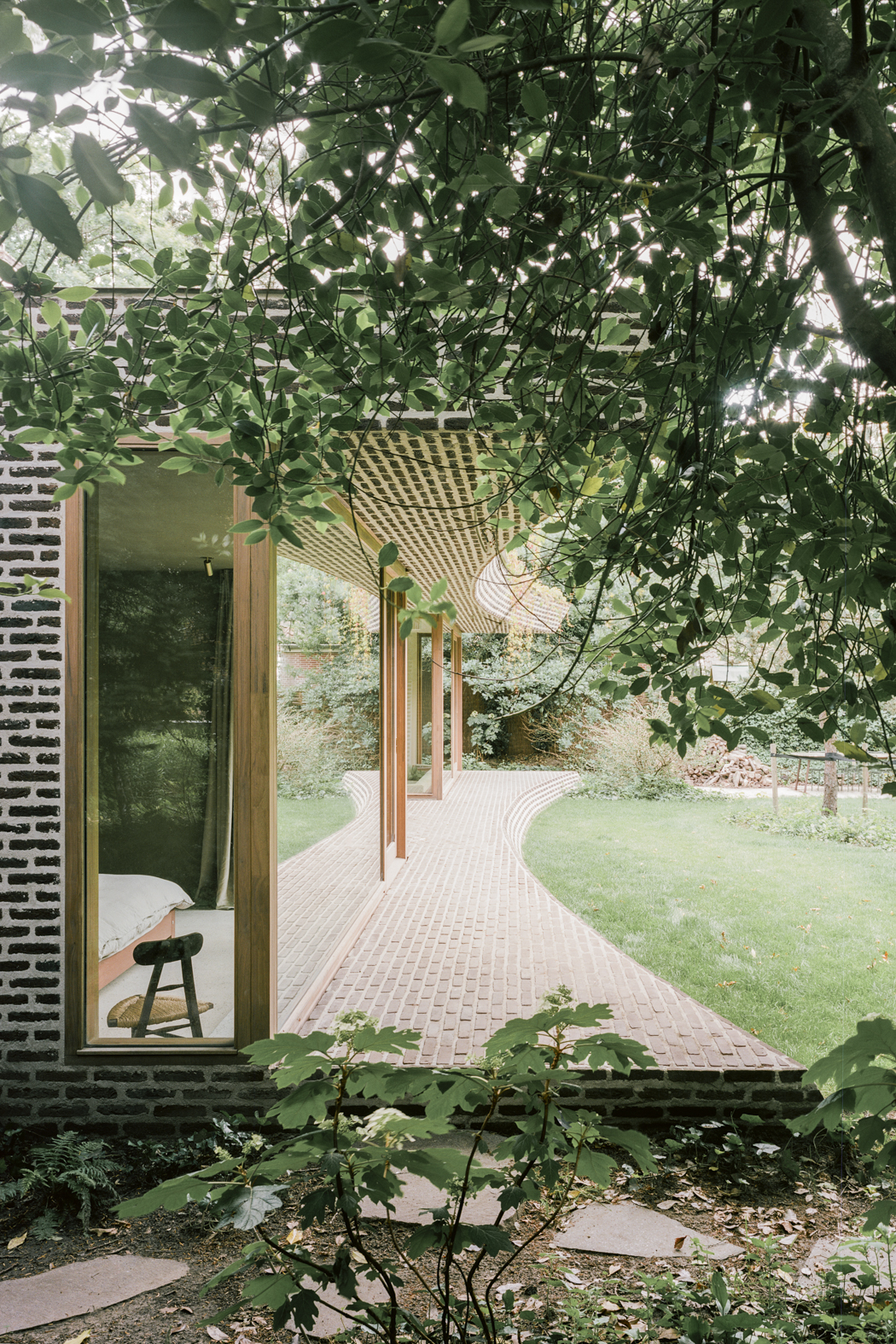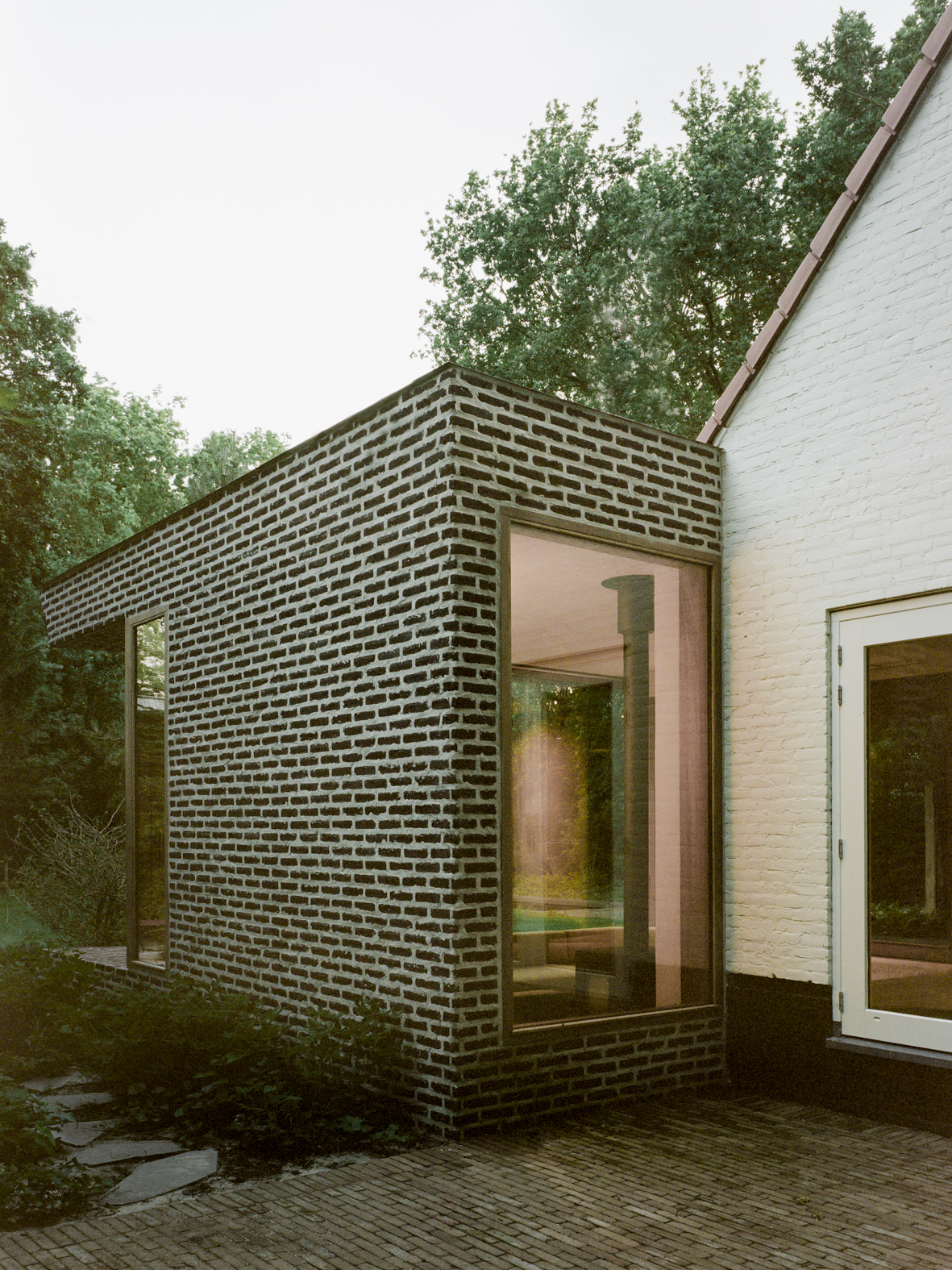BD House is a minimal residence located in Bergen, The Netherlands, designed by Space Encounters in collaboration with Studio Vincent Architecture. A small white cottage from the 1950s in the picturesque village of Bergen turned out to be technically and physically unsound for modern living requirements. However, after the young family who had just moved in opted to live there for a few weeks, the house proved to be so distinctive that they chose to renovate and expand it rather than demolish it. Instead, the design of BD House underwent a multi-layered change that brought together the region’s rich natural beauty, sustainable transformation, and cultural legacy. With its renovation and expansion, BD House has not only grown larger but has also become more future-proof, making a contribution to the larger change in the countryside where the existing housing stock is becoming more sustainable and adapted to shifting desires and demands for contemporary living.
The home is situated between a pine forest, open polder, and coastal dunes. The existing home is embraced by the addition, which also opens it up to the garden to rekindle the sense of being in the woods. An interaction between symmetry and asymmetry, the straight line and the curve, is produced by the combination of the present volume and that of the extension. The original house’s architecture already had a tension to it. The first floor is entirely devoted to the kids so they may make it into their own world. It has two bathrooms, a playroom, bedrooms, and a guest room. The ground-floor wings that open into the garden are where the living room and master bedroom are located. A tree has been planted in the curved veranda between these wings, giving the area where inside and outside meet shape by poking through the veranda roof. The midway point of a virtual sphere, which has been used to truncate the sides of the veranda floor and cantilevering roof, is located in the midst of the garden, giving the villa a conceptual and literal embedding in the surrounding environment.
The brick structure is anchored in the undulating landscape of maritime pines by the translucent facade, which is made of Fraké wood that has been sustainably conserved. The large sliding doors and oblique windows also prolong the spatial enfilade of the interior into the garden design. Both the original villa and the addition are made of brick, although they differ in brick size, color, and treatment, showing the project’s layers of history. Mineral paint in the colors of white and anthracite has been applied to the newly refurbished white villa. The expansion, which is inspired by the Sigurd Lewerentz design, is built out of recycled dark brown bricks, which, along with the wide joints, give it a powerful aspect that will eventually be supplemented by the traces of nature.
Photography by Lorenzo Zandri
